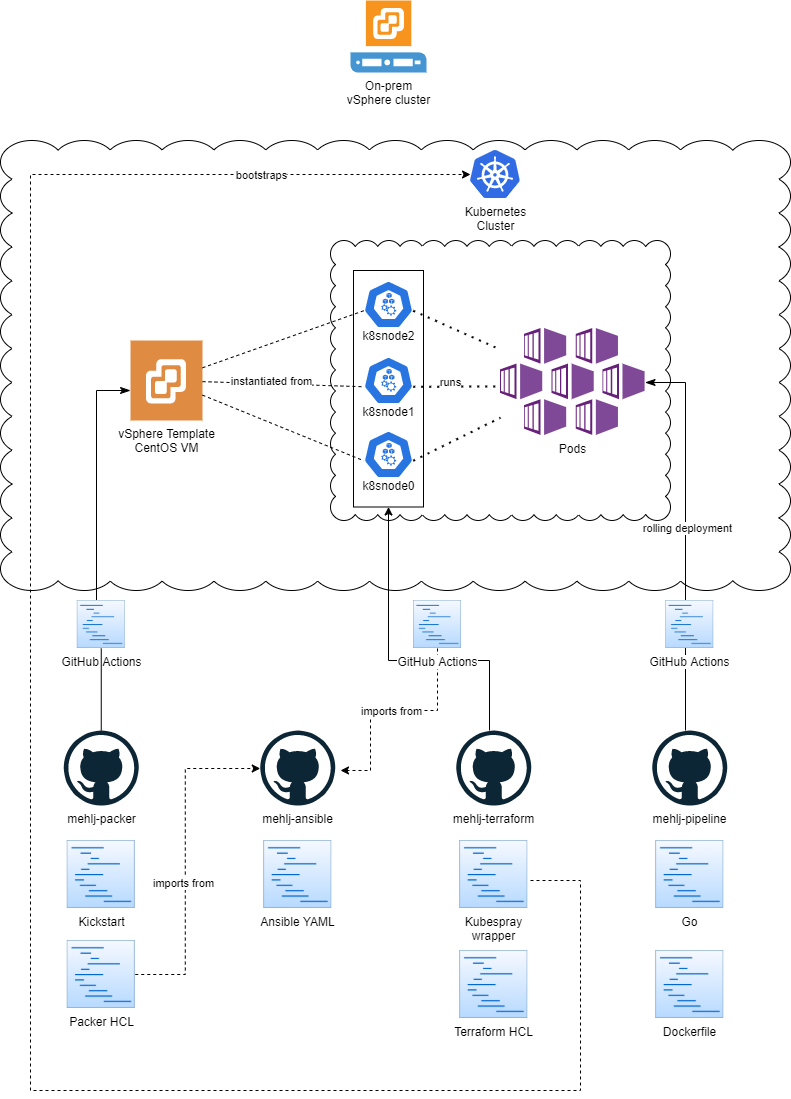Project - On-Premises Kubernetes - Overview
Links
Background
Kubernetes seems to have won the container orchestration competition, and even Mirantis agrees.
Kubernetes may have added complexity when compared to Swarm, but, if utilized properly alongside a well-engineered microservice software architecture, it can add significant business value.
As such, I wanted a project to test out on-premise Kubernetes cluster bootstrapping, as some work scenarios may not merit cloud deployments.
Goal
An automated, secure, and code-defined pipeline(s) that, when run, provisions virtual machines, bootstraps a production-ready Kubernetes cluster, and deploys a simple REST API behind a clustered reverse proxy.
Strategy
Tools
vSphere
I will be leveraging my existing vSphere cluster in my home lab, licensed with vSphere Enterprise and vCenter through VMUG Advantage.
Infrastructure as Code
terraform will be used for all infrastructure provisioning - in this case, three Kubernetes cluster nodes.
Templating
The vSphere provider for terraform generally requires a vSphere template to clone from, so packer will be used to provision and apply configuration management to a CentOS template.
Configuration
ansible will be used for all configuration management. CM code should be applied to baseline images only, to promote the principles of immutable infrastructure.
Kubernetes
kubespray will be used for Kubernetes cluster bootstrapping. It is better to leverage tried and true methodologies for complex tasks such as this.
REST API
The REST API will be written in go, with the appropriate Dockerfile to facilitate docker image creation.
Version Control
All code or configuration files will be stored in GitHub repositories. These repositories should be made public, as there will be no secrets stored in the code itself.
CI/CD
Since all code will be stored in GitHub - I will leverage GitHub Actions for all CI pipelines.
Separation
Generally, I will try to promote logical separation of three major tenants in tech environments:
- Infrastructure
- Configuration
- Applications
As such, I will keep these elements independent of each other, while still employing CI pipelines to bridge those gaps and automate deployment start to finish.
Overview
